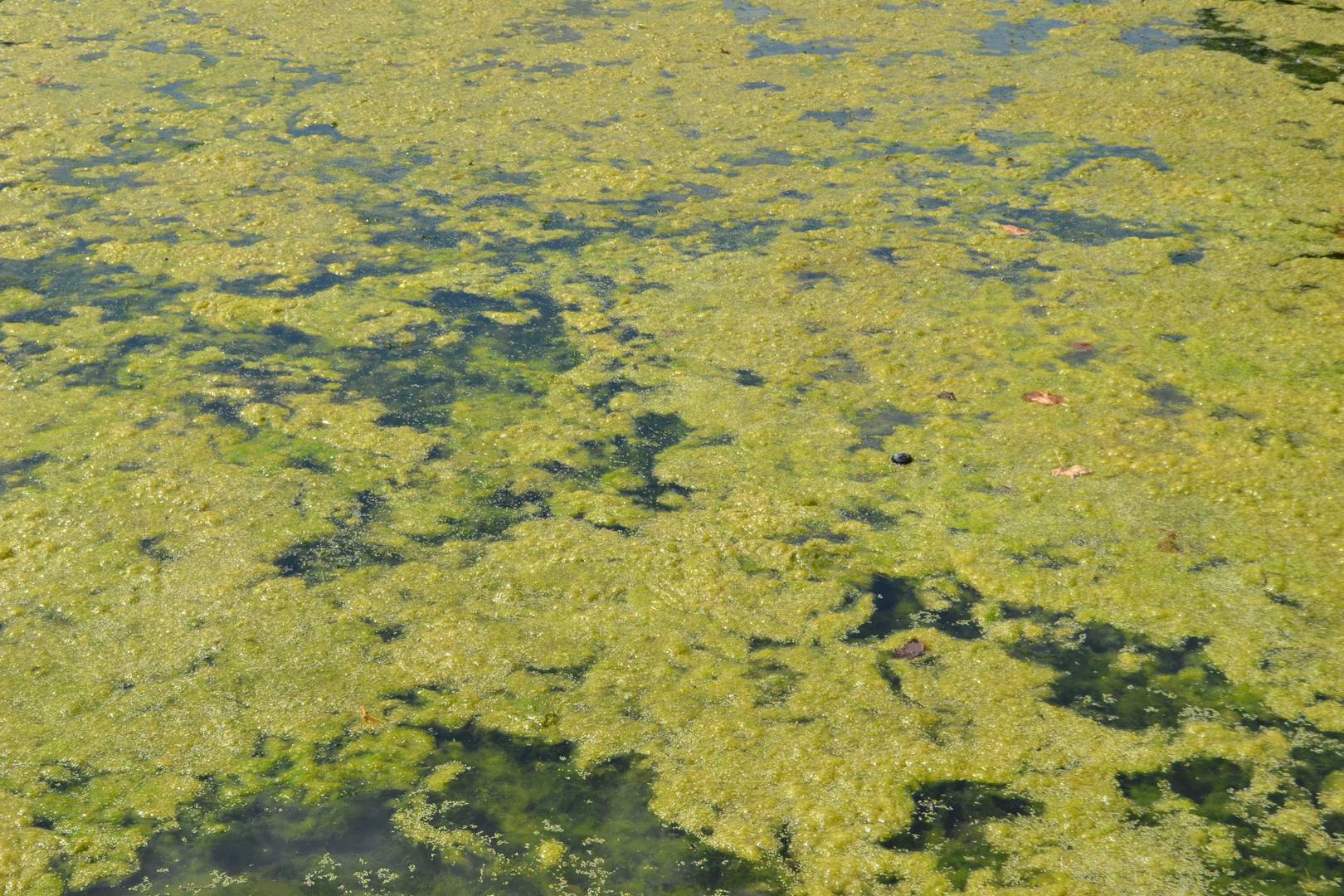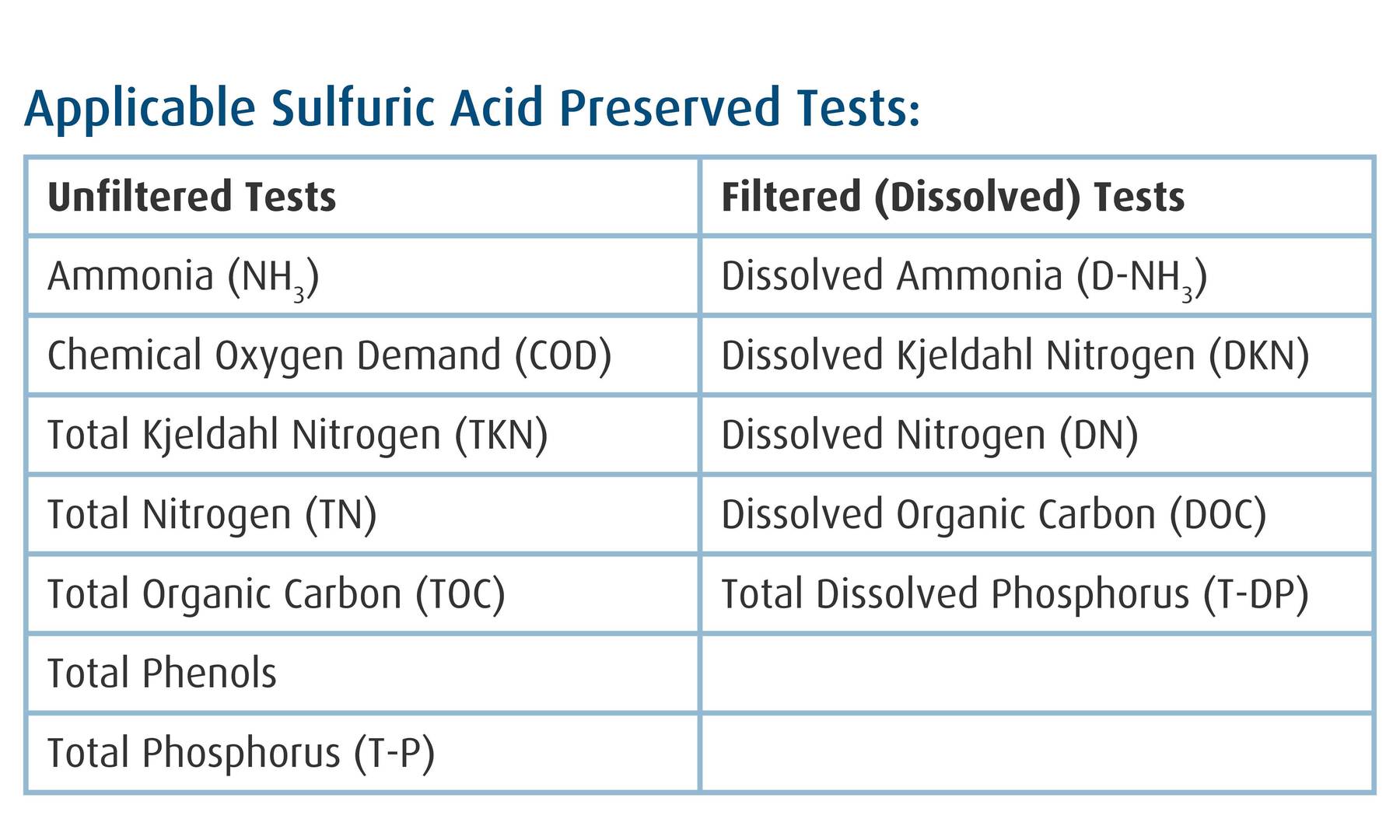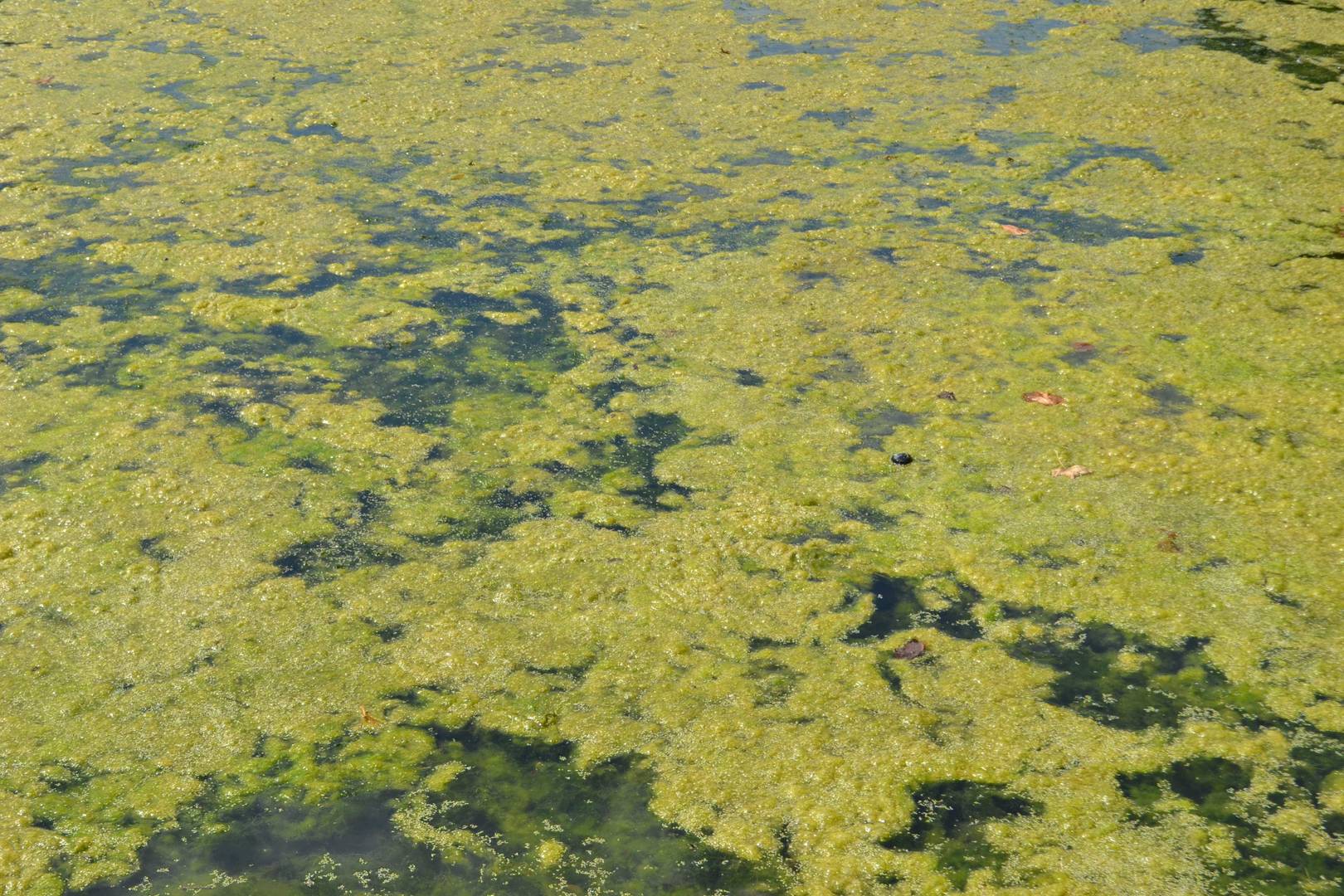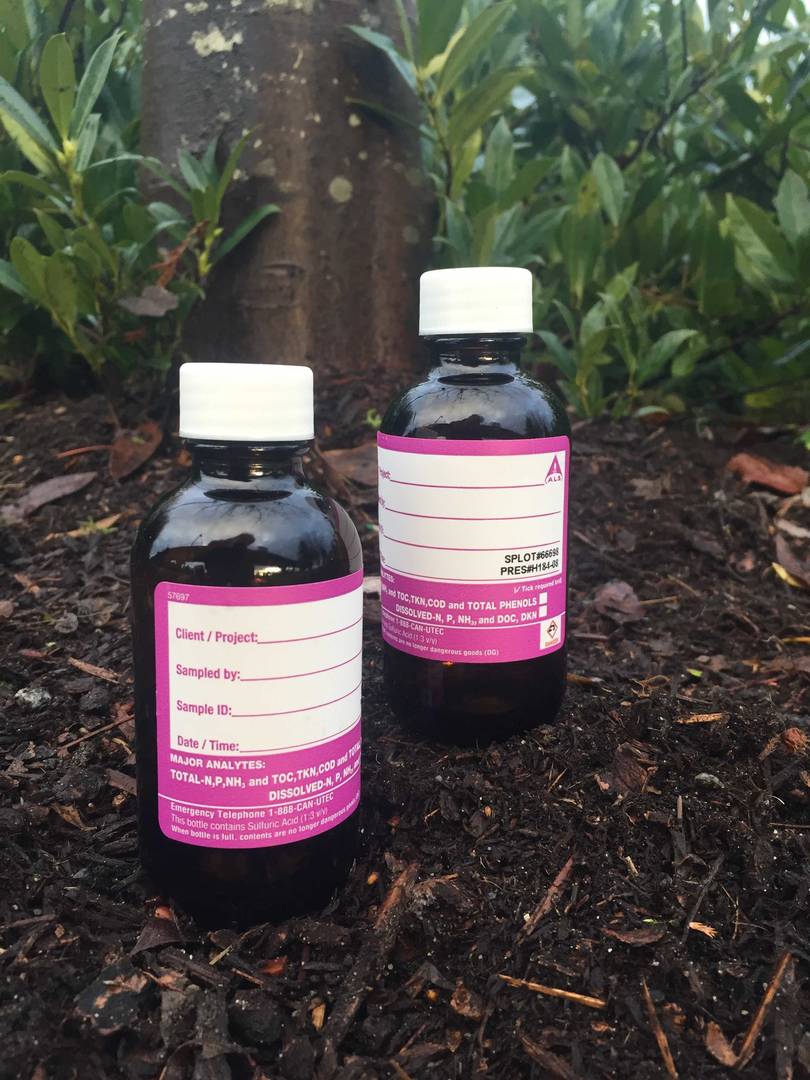EnviroMail 10 Canada
Maximizing Data Quality for Nutrients and Aggregate Organics
Chemical testing of environmental water samples for nutrients (including phosphorus, ammonia, and other forms of nitrogen) is important due to their potential to cause eutrophication or “over-enrichment” of natural water bodies – often triggered by contamination from phosphate detergents, fertilizers, or sewage. These types of events can lead to algal blooms and aquatic toxicity due to oxygen depletion. Tests for aggregate organics such as Total or Dissolved Organic Carbon (TOC/DOC) and Chemical Oxygen Demand (COD) are closely related, predicting risk and potential for oxygen depletion of aquatic ecosystems.


New Pre-Acidified Sample Bottles for Nutrients & Aggregate Organics
Following the hugely popular pre-acidified sample container for metals sampling, ALS is now adopting pre-acidified containers across Canada for sulfuric acid preserved nutrients and aggregate organics. Pre-charged nutrient sample containers have long been the standard for ALS in Eastern Canada (and globally), and this practice is now being expanded. New ALS sample bottles are 100 mL amber glass with silicone septum-sealed Teflon-lined caps, pre-charged with 1:3 H2SO4, with GHS-compliant labelling.Sulfuric acid preservation prevents bacterial growth and bacterial degradation of target analytes. Pre-charging the sulfuric acid in the sample bottle removes the need to decant small quantities of acid from one container to another in the field, reducing the potential for contamination of samples and for accidental exposure of sampling staff to the acid preservative. This also results in faster, simpler, more efficient sampling procedures.

Reduced Risk of Vapour-Induced Ammonia Contamination
Historically, trace (part per billion) level ammonia contamination in acidic trip blanks and acid-preserved samples has been a common problem in the industry due to the ubiquitous nature of ammonia-based cleaning products, the wide range of ammonia concentrations found in water samples, and occasionally due to inadvertent exposure from ammonia-based preservatives used for other tests (such as the ammonium sulfate preservative used for hexavalent chromium tests in Ontario).
After many studies to address this problem, ALS concluded that most ammonia contamination is caused by influx and dissolution of ammonia vapours into acidic samples or preservatives during storage or transport. ALS technical experts recognized that the best solution to this problem is to isolate samples and preservatives from ambient vapours, and that the best way to do this is to use a Teflon-lined septum-sealed cap, which is designed to provide a strong airtight seal (these are typically used for sampling of volatile organic compounds or VOCs). This type of sample cap virtually eliminates the potential for vapour-induced ammonia contamination of samples and preservatives, and improves the reliability of trace level ammonia samples and test results (LOR 5 ug/L). Under controlled worst-case test conditions, new ALS sample bottles with septum-sealed caps reduced ammonia contamination by as much as 99% compared to non-septum sealed caps, when samples were packed in a cooler together with an ammonium sulfate preservative solution.
Why Glass Bottles for Nutrients & Aggregate Organics?
Although plastic is a permitted option for tests applicable to this new sample container, ALS chose amber glass for quality reasons, because some forms of aggregate organics included within the COD, TOC/DOC, TKN/DKN, TN/DN, and Total Phenols parameters can sorb to plastics, and can be degraded by UV light. Amber glass sample containers represent the industry standard best practice for the sampling of waters for most organic tests such as hydrocarbons and discrete organic substances, and can also provide quality benefits for aggregate organic tests, especially at trace levels (as per APHA).

Avoid Pre-Rinsing Pre-Charged Sample Bottles
Pre-rinsing of bottles with sample is a largely outdated practice from decades past when sample bottles were re-used and washed by laboratories. ALS no longer recommends pre-rinsing of sample bottles, because all bottles provided to our clients meet strict quality requirements without additional handling or cleaning in the field. Field sampling equipment is a far more likely source of contaminants than sample bottles. As a result, best practice today is to include a suitable Field Blank with all sampling submissions to monitor and control sampling equipment and conditions. Pre-rinsing of sample bottles cannot be performed where bottles are pre-charged with preservative.
Field Filter Dissolved Tests for Optimal Data Quality
As per current practice, an unfiltered sample is required for Ammonia, COD, TKN, TN, TOC, Total Phenols, and T-P with one bottle sufficient for all tests including laboratory QC. When using ALS pre-charged sample containers, a field-filtered sample is required for all dissolved species tests, including Dissolved Ammonia, DKN, DN, DOC, and T-DP. Field filtration is strongly recommended for the most defensible and optimal results, as per APHA guidance, because the dissolved fraction of some samples can change dramatically after sampling — particularly for anoxic groundwaters after exposure to air. For all dissolved species tests, it is important to tick the checkbox on the label to record that filtration has occurred.
Only sample containers and filtration media that have been proofed by the lab for suitability for the intended tests and detection limits should be used. Field Blanks are highly recommended as this can help identify whether field processes are a potential source of false positives. For a nominal fee, ALS can provide suitable quality-assured syringe filters and disposable syringes for field filtration. Because syringe filters use membranes made from organic carbon polymers, even the cleanest filters can contribute trace levels of some aggregate organic substances (particularly DOC). For optimal results, ALS therefore recommends to discard the first 2 mL of filtrate passed through each new syringe filter (particularly when filtering small sample volumes or if using multiple filters per sample).
Hold times for all these tests are unchanged at 28 days with H2SO4 preservation. The new ALS new colour-coded label is purple, matching its presentation in the ALS Canada Sample Collection Pocket Guide.
Please contact your ALS Account Manager or technical support staff for further information on these changes, or with any questions you may have.





















































